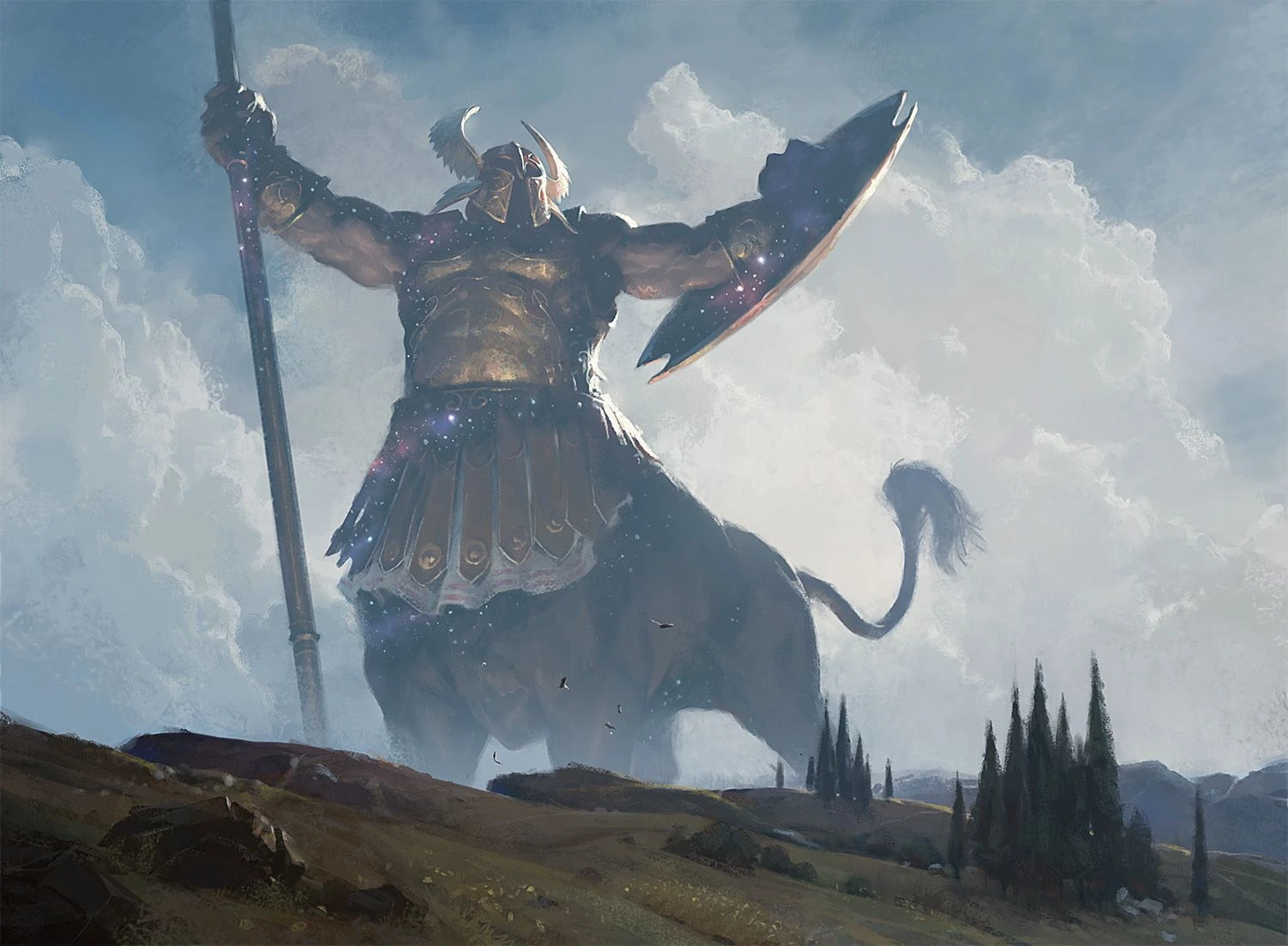Table of Contents
At the recent SCG Kaldheim Championship Qualifier and its accompanying satellite tournaments, there was a lot of data to be gathered with over 3,500 matches played. The data is incredibly useful as it gives us information on what decks are dominant, what decks underperformed, and with a little background knowledge on the game, we can reasonably deduce why different archetypes performed the way they did. With the way the tournament was fractured, we can also gain key insight into how the metagame evolved within the tournament.
- View my complete data sheet with matchup data and links to the applicable MTG Melee tournaments
- Another aggregated data infographic by MTG Data from all the major Historic tournaments
SCG Tour Online Historic Satellite Metagame
| TOTAL SATELLITE | # of Decks | % of Field | Wins | Losses | Match Win % |
|---|---|---|---|---|---|
| Sultai Midrange | 210 | 28.89% | 536 | 510 | 51.24% |
| 4C Control | 29 | 3.99% | 73 | 65 | 52.90% |
| Jund Sacrifice | 83 | 11.42% | 202 | 190 | 51.53% |
| Goblins | 114 | 15.68% | 326 | 238 | 57.80% |
| RB Arcanist | 52 | 7.15% | 154 | 111 | 58.11% |
| G Aggro | 21 | 2.89% | 49 | 54 | 47.57% |
| B Aggro | 18 | 2.48% | 39 | 46 | 45.88% |
| R Aggro | 52 | 7.15% | 77 | 134 | 36.49% |
| RG Aggro | 43 | 5.91% | 89 | 116 | 43.41% |
| UW Control | 13 | 1.79% | 25 | 29 | 46.30% |
| UB Control | 32 | 4.40% | 74 | 82 | 47.44% |
| UW Auras | 32 | 4.40% | 75 | 78 | 49.02% |
| WB Auras | 28 | 3.85% | 62 | 71 | 46.62% |
| TOTAL | 727 | 100% | 1781 | 1724 | 3505 Matches |
Satellite 1: Sultai was the deck to beat
| Archetype | # of Decks | % of Field | Wins | Losses | Win% |
|---|---|---|---|---|---|
| Sultai Midrange | 25 | 37.88% | 70 | 64 | 52.24% |
| 4C Control | 1 | 1.52% | 4 | 2 | 66.67% |
| Jund Sacrifice | 6 | 9.09% | 14 | 12 | 53.85% |
| Goblins | 4 | 6.06% | 9 | 10 | 47.37% |
| RB Arcanist | 2 | 3.03% | 6 | 4 | 60.00% |
| G Aggro | 4 | 6.06% | 9 | 10 | 47.37% |
| B Aggro | 2 | 3.03% | 8 | 4 | 66.67% |
| R Aggro | 6 | 9.09% | 9 | 16 | 36.00% |
| RG Aggro | 3 | 4.55% | 7 | 8 | 46.67% |
| UW Control | 0 | 0.00% | 0 | 0 | 0.00% |
| UB Control | 3 | 4.55% | 8 | 6 | 57.14% |
| UW Auras | 3 | 4.55% | 5 | 7 | 41.67% |
| WB Auras | 7 | 10.61% | 19 | 17 | 52.78% |
| TOTAL | 66 |
The large archetypes in the first Satellite 1 were Sultai, Jund, Mono Red, and Auras. Sultai has a target on its back, being the previous top deck along with gaining a powerful new tool in Fatal Push. While super fast aggressive decks tended to give Sultai a hard time in the old meta, Push was able to prove its worth throughout the tournament, giving Sultai an incredibly high win percentage against Auras, above 70% throughout all the satellites against the UW variant and above 80% against the WB variant. The deck also crushed Mono Red Aggro, winning over 60% of its matches. The Jund matchup was also around 50%.
Sultai Midrange by Tian Fa Mun – $5K Kaldheim Championship Qualifier (13th)
[sd_deck deck=”wrt_MGq1s”]
Overall, things looked really good for Sultai moving forward, unless something drastic changed, like, I don’t know, a Goblin Grandee?
Goblins comes out on top
In Satellite’s 3, 6, 7, and 8, Goblins came to play! After going 7-0 to Sultai in Satellite 1, the deck came back for Round 2 and clobbered Sultai again and again, posting above 60% against the menace. So where is Sultai failing against Goblins? Surely a deck that relies on creatures being in play would be soft to the Fatal Push, Extinction Event deck?
Mono-Red Goblins by Brandon Burton – $5K Kaldheim Championship Qualifier (12th)
[sd_deck deck=”-ZYMVT99R”]
Muxus solves the problem against Sultai quite nicely. Sultai is a deck that wants to grind out value with 1 for 1s and 2 for 1s and Muxus lets you ignore the removal and kill them before they have a chance to wrath by getting a potential 6 for one, and even more if you hit a Krenko. It often kills the turn it comes down, demanding a counterspell from a deck that typically plays very few. Goblins often powers out Muxus quickly with accelerants like Skirk Prospector and Wily Goblin because the card is so powerful. So what can Sultai do to make the matchup better?
Going back to Four colors
Enter Yasharn, Implacable Earth. Four-Color Control is a variation on Sultai that splashes white for the Pig because it does wonders for the deck’s bad matchups, and we can see that with the tournament data.
Four-color Control by Yuma Koizumi – $5K Kaldheim Championship Qualifier (1st)
[sd_deck deck=”hgD1RanNE”]
If we compare Sultai without the Pig to Sultai with the Pig, it dramatically increases your win rate against Jund, a strong, popular deck along with Goblins. The reason why Pig can be good against Goblins is that it slows them down significantly, turning Skirk Prospector and Wily Goblin into textless 1/1s. By making it so the Muxus has to come down later than normal, along with Grafdigger’s Cage making it so the Muxus can’t kill you the turn it comes down, Sultai with Pig gets to play a “fairer” game of Magic, and there it can actually win which is why the win rate goes up so drastically. The downside of this is that the deck loses points in the mirror.
Tuning Sacrifice Decks
Jund Sacrifice is a strong deck that has the potential to do some really powerful things. Not many decks want to be on the opposing side of Cat/Oven and Mayhem Devil. Despite that, the deck had a mediocre performance this weekend. Jund had an about even performance against the most popular decks, Sultai and Goblins, and continued that trend against the rest of the field, only hitting above .500 against Auras and Arcanist lists. The deck also has a glaringly bad matchup against 4C Control, as the Pig makes it incredibly difficult for you to execute any relevant game action.
Rakdos Sacrifice by Tristan Wylde-LaRue – $5K Kaldheim Championship Qualifier (2nd)
[sd_deck deck=”vPbMqe7tn”]
There is a variant of Jund Sacrifice that drops the green package (i.e. classic Rakdos), creating a leaner game plan without the top end of Korvold. There are very few advantages to this however, as the deck doesn’t gain much speed while it loses its main piece for winning the Sultai matchup and folds even harder to Yasharn. This weakness was on center stage, as the Finals match of the Kaldheim Qualifier was 4C Control against RB Sacrifice. Not only did the Sultai variant have the game ending tool of Yasharn, but RB Sacrifice lacked the crucial card advantage engines of Korvold and Trail of Crumbs to play at the same pace.
Conclusion
So how can you apply the information from the tournament to your own deck decision?
Well the first thing you can learn is that individual card choices can have a huge effect on matchups. Maindecking Yasharn, with most decks running 2 main and 1-2 in the sideboard improved the Goblins matchup from poor to about even. Some Jund Sacrifice lists ran Witch’s Vengeance in the sideboard, which allowed them to improve their Goblins match significantly.
The next, and in my opinion most important, thing you can learn is that metagames matter, and they evolve too. Initially, Sultai did really well, but it became targeted and needed to adapt. Adapt it did, and the deck won the tournament because of it, along with some favorable pairings. Be aware of meta shifts, and adapt with them.
If you have a target on your back, you need to move so you are harder to hit. If you see your target moving, move with it.

Premium
Enjoy our content? Wish to support our work? Join our Premium community, get access to exclusive content, remove all advertisements, and more!
- No ads: Browse the entire website ad-free, both display and video.
- Exclusive Content: Instant access to all exclusive articles only for Premium members, at your fingertips.
- Support: All your contributions get directly reinvested into the website to increase your viewing experience!
- Discord: Join our Discord server, claim your Premium role and gain access to exclusive channels where you can learn in real time!
- Special offer: For a limited time, use coupon code L95WR9JOWV to get 50% off the Annual plan!









































